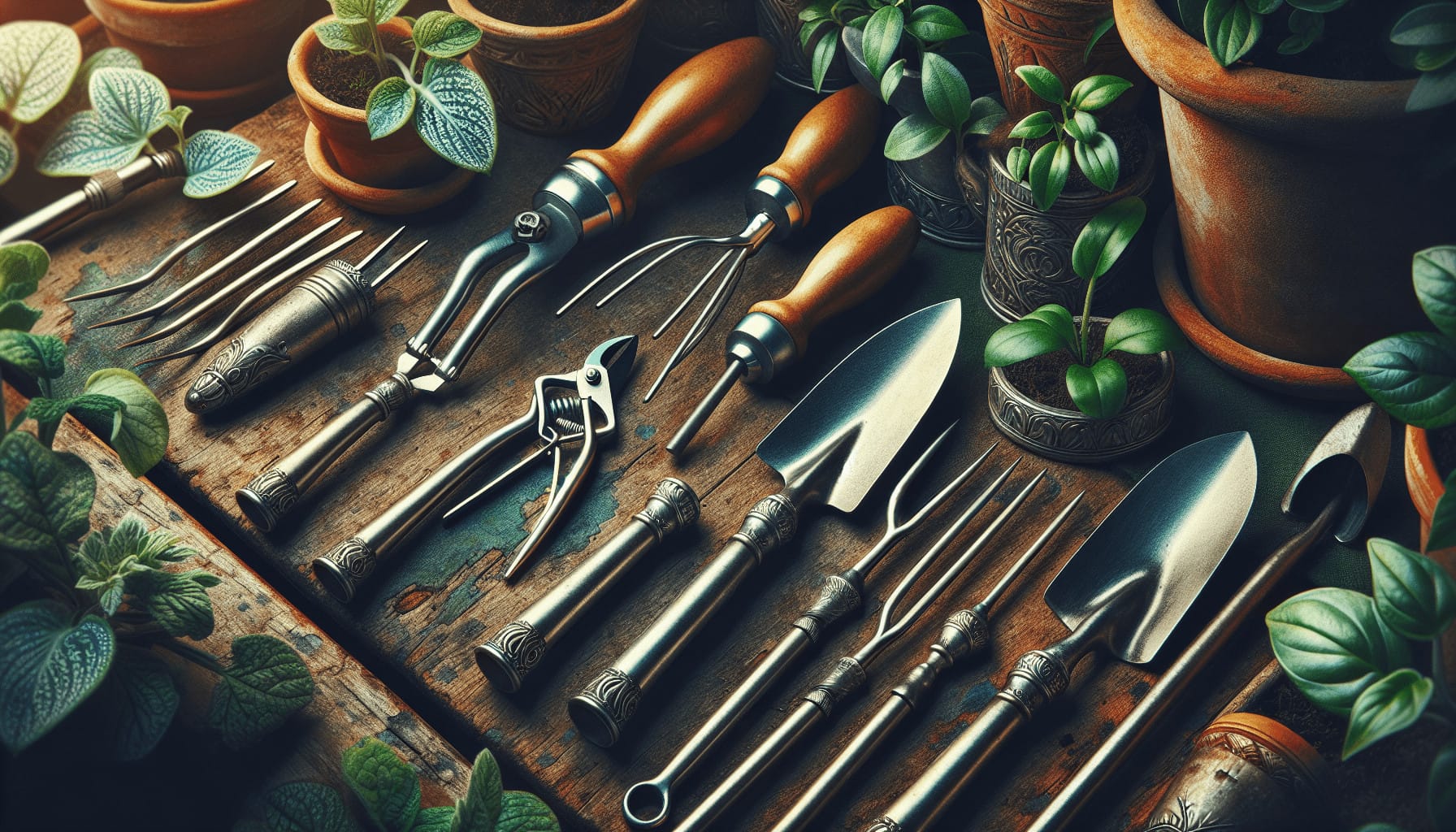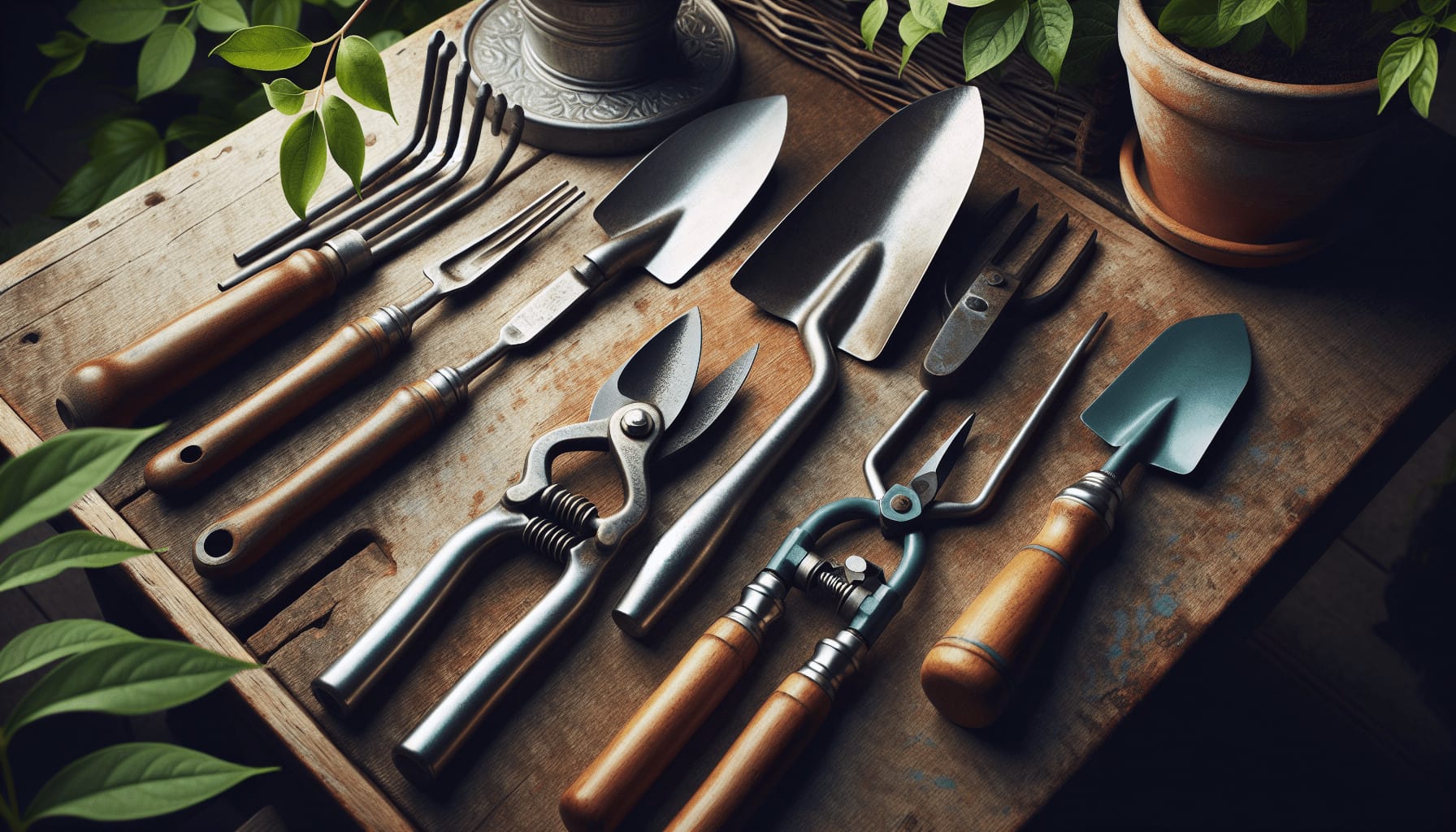Have you ever wondered how to extend the life of your gardening tools and keep them in top-notch condition? Maintaining and cleaning your gardening equipment can be a rewarding process that not only saves you money but also enhances your gardening experience. Let’s embark on this journey to discover the best ways to keep your tools in optimum shape, ensuring they serve you well season after season.

Importance of Maintaining Gardening Equipment
Maintaining your gardening tools is crucial because it directly impacts their performance and longevity. By maintaining your equipment, you’re not just ensuring they work properly but also enhancing your work efficiency and the results of your gardening efforts.
Prolonged Lifespan of Tools
One of the primary benefits of regular maintenance is extending the lifespan of your tools. Regular cleaning and proper care prevent rust and deterioration, which can easily render a tool useless over time. Just like other investments, your gardening equipment requires nurturing to keep functioning smoothly.
Efficient Gardening Performance
A well-maintained tool performs better, reducing the manual effort you need to put in. Whether it’s a sharp pruning shear or a clean shovel, your gardening tasks become easier and more enjoyable when your implements work as intended.
Tools and Materials Required for Maintenance
Before you get started, it’s important to gather the right tools and materials for maintaining your garden equipment. Having everything you need at your disposal simplifies the job and keeps you on task.
Essential Cleaning Tools
- Wire Brush: Great for scrubbing off rust from metal surfaces.
- Old Rags or Towels: Useful for wiping and drying tools after cleaning.
- Sandpaper or Steel Wool: For smoothing rough edges and surfaces.
- Oil (such as Linseed or Motor Oil): Prevents rust and keeps moving parts lubricated.
- Mild Detergent or Cleaner: Necessary for removing stubborn dirt.
Storage Tips
Consider investing in a toolbox or a pegboard to organize and store your tools properly. This not only keeps them safe but also makes sure you always know their whereabouts.
Cleaning Different Types of Gardening Equipment
Different gardening tools require different cleaning techniques. Here’s a detailed look at how you can effectively clean your various gardening equipment.
Cleaning Hand Tools
Hand tools like spades, trowels, and pruners are among the most commonly used, and therefore, the most prone to dirt accumulation and rust.
Rinse Immediately After Use: After each use, rinse your hand tools with a hose to remove soil and debris. This simple act can prevent much harder cleaning work later on.
Scrape Off Excess Dirt: Use a wire brush to scrape off any remaining soil. Pay particular attention to joints or pivot points for pruners and shears.
Remove Rust: For any rusted areas, gently scrub with steel wool or sandpaper until the rust is removed.
Dry and Lubricate: Dry the tools thoroughly to prevent moisture-related issues. Apply a light layer of oil on metal parts to protect against rust.
Cleaning Power Tools
Power tools like lawn mowers, chainsaws, and hedge trimmers need extra attention because their complex mechanisms are vulnerable to dirt and rust.
Disconnect Power Source: Ensure the tool is off and unplugged (or battery removed) before beginning any maintenance.
Clear Debris: Use a brush or air compressor to remove debris from intricate parts.
Clean Blades and Moving Parts: Use soap and water to clean blades, ensuring they are dried immediately afterward to prevent rust. Sharpen blades if necessary.
Lubricate Parts: Apply oil to moving parts to keep them functioning smoothly.
Sharpening Your Gardening Tools
Sharp tools are not only safer but also more effective. Dull blades can damage plants and make your work more exhausting.
Hand Tools
For hand tools like pruners, shears, and hoes:
Use a Sharpening Stone: A sharpening stone or file can be used to hone the cutting edges. Work at the same angle as the bevel of the blade.
Consistent Pressure: Apply even pressure as you guide the sharpening stone along the edge.
Test Sharpness: Carefully test the sharpness by cutting a piece of paper or a leaf.
Power Tools
Good maintenance is especially crucial for power tools to ensure safety and efficiency.
Remove Blade: For lawn mowers and hedge trimmers, remove the blade before sharpening.
Sharp Angle Consistency: Maintain a consistent angle to preserve the original sharpness profile of the blade.
Reattach and Secure: After sharpening, securely reattach the blade to the tool, ensuring everything is tightly fastened.

Proper Storage of Gardening Equipment
Proper storage can significantly enhance the lifespan of your tools by protecting them from the elements.
Indoor Storage
Store your tools in a dry, climate-controlled environment. Tools left outside are prone to rust and other weather-related damage.
Hang Tools: Utilize wall space by hanging tools. This keeps them off the ground and reduces clutter.
Shelving Units: Install shelving for bulky items like lawn mowers and shovels.
Seasonal Storage Tips
At the end of the gardening season, give your tools one last clean before storing:
Deep Clean: Clean, sharpen, and oil tools before storing them away for the winter.
Rust Prevention: Consider wrapping metal parts in oiled cloths or paper to prevent rust development during off-seasons.
Regular Maintenance Checks
Routine checks are part of a comprehensive maintenance plan. Just as we schedule services for our cars, regular inspections for your gardening tools ensure they’re in good working order.
Monthly Inspections
Check for Loose Parts: Tighten any nuts, bolts, or screws that might have loosened during use.
Rust and Damage Check: Inspect all surfaces for rust or damage and address them promptly.
Functional Testing: Run power tools to make sure they are operating correctly and efficiently.
Seasonal Inspections
Pre-season and post-season checks can make a huge difference:
Thorough Cleaning: Start the season with a thorough cleaning, ensuring everything is ready for heavy use.
Repair or Replace: Address any broken or inefficient tools that can impact your work.
Eco-Friendly Maintenance Options
With growing awareness of environmental impact, looking for eco-friendly ways to maintain your equipment can be beneficial.
Green Cleaning Products
Opt for biodegradable soaps and natural oils for cleaning and lubrication needs. These are less harmful to the environment and just as effective.
Recycling and Upcycling
Instead of discarding old tools, consider recycling the metal or upcycling the handles into garden markers or decorative features.
Reduce Chemical Use
Regularly using oils and rust-prevention sprays can contribute to pollution. Use these sparingly and explore natural alternatives.
Conclusion
Caring for your gardening equipment not only extends the life of your tools but also enhances their effectiveness, allowing you to enjoy your gardening activities more fully. By incorporating these practices into your routine, your tools will remain valuable allies in your gardening endeavors. Remember, a well-maintained tool is the heart of efficient and enjoyable gardening. Keep your equipment in top shape and your garden will thrive as a result.
